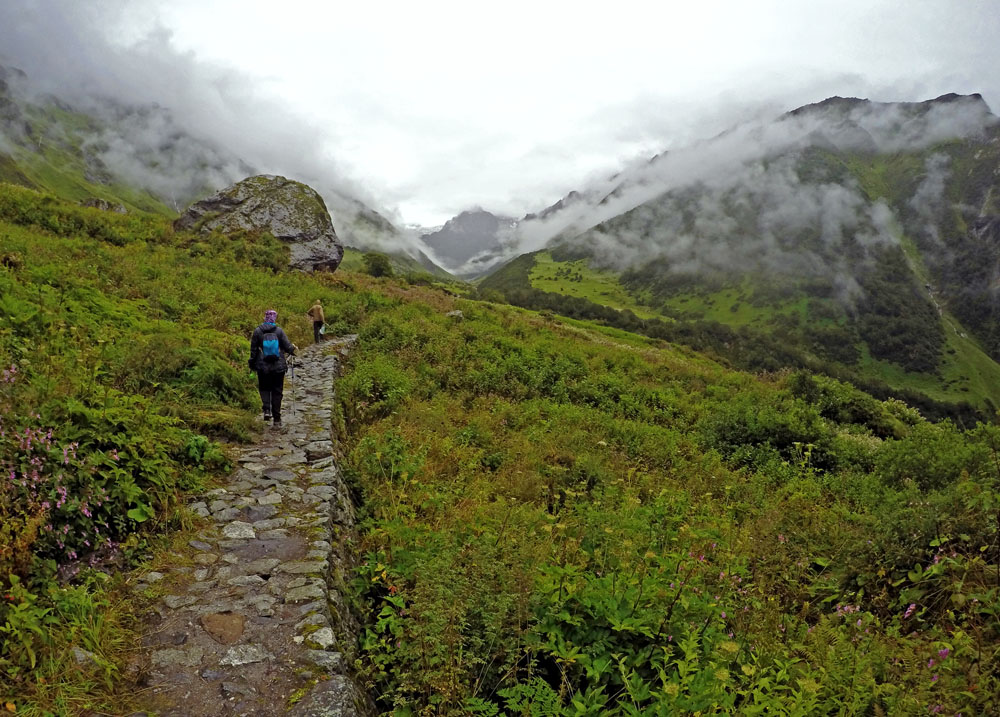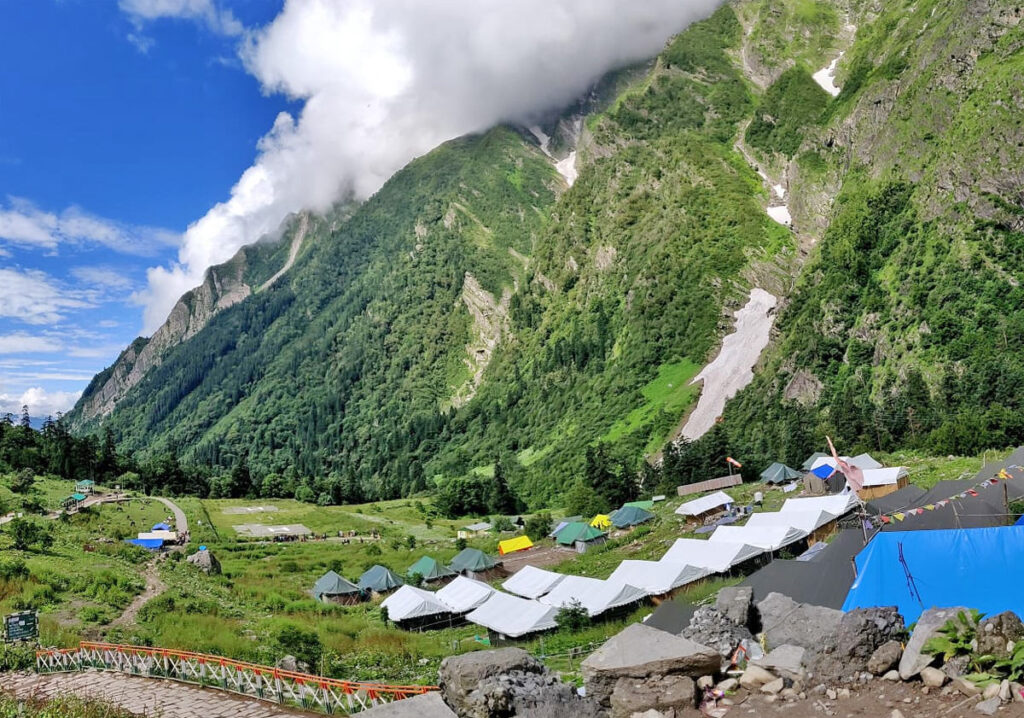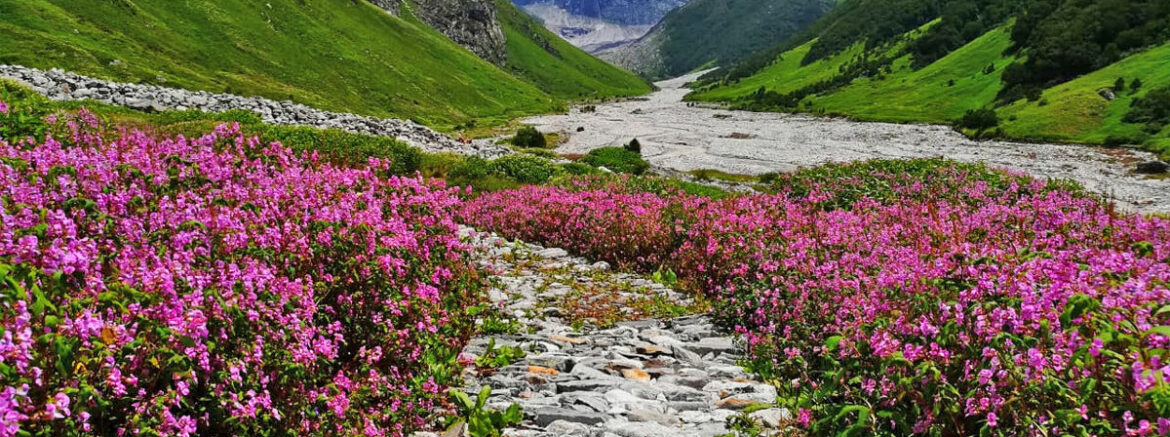Valley of flowers trek located excessive in the Western Himalayas, the Valley of Flowers is a breathtaking destination that attracts adventurers and nature lovers from across the sector. Located in the nation of Uttarakhand, India, this alpine retreat is thought for its colorful flower meadows, snow-capped peaks and pristine landscapes. In this comprehensive manual, we embark on an journey via the Valley of Flowers trek, exploring the route, the high time to visit and the remarkable splendor that awaits folks that project into this Himalayan wonderland.
Table of Contents
Quick facts of the Valley of flowers trek:
Location: Uttarakhand, India
Elevation: 3,658 meters (12,000 feet) above sea level
Trek length: 6 to 9 days (depending at the itinerary)
Best time to go to: Late June to September
Preparation for the trek:
Permits and Regulations:
Before embarking on the Valley of Flowers trek, it is essential to obtain the required permission from the Uttarakhand Forest Department. In addition, tourists want to maintain a permanent entry to the vicinity of Hemkund Sahib, a Sikh pilgrimage site, as the trek to the Valley of Flowers regularly consists of a visit to this sacred site.
Physical ability:
While the trek is considered moderate, hikers should be in exact physical condition. Regular cardio and energy training physical games in the main weeks leading up to the trek can greatly increase stamina.

Packaging Basics:
Pack light, but consider the essentials, which include sturdy trekking shoes, climate-appropriate clothing, a reliable rucksack, a first aid kit, water bottles and snacks with excess electricity. The climate can be unpredictable, so be prepared for rain and freezing temperatures.
Valley of flowers trek itinerary:
The Valley of Flowers trek usually starts from Govindghat with subsequent stops at Ghangaria and Hemkund Sahib.
Here is a simplified itinerary:
Day 1: Govindghat to Ghangaria (14 km trek)
The trek starts from Govindghat and the initial stretch involves a gradual climb. Ghangaria serves as a base camp for the Valley of Flowers and Hemkund Sahib.
Day 2: Ghangaria to Valley of Flowers (4 km trek)
The journey to the Valley of Flowers is a short but thrilling adventure through lush meadows adorned with a riot of colorful flora. Tourists have ample time to explore the diverse flora of the valley.
Day 3: Ghangaria to Hemkund Sahib (6 km trek)
The steep climb ends at Hemkund Sahib, an elevation of a glacial lake surrounded by seven snow-capped peaks. The pristine location and Gurudwara Sahib add religious significance to the trek.
Choosing the Ideal Season: Exploring the Valley of Flowers
The window from the end of June to September marks the superior time to embark at the Valley of Flowers trek, presenting an interesting adventure through nature’s canvas. This length is cautiously decided on to make sure that trekkers witness the valley’s real splendor, as it undergoes an exquisite transformation, becoming a colorful tapestry of colors and lifestyles.
Blooming Flora:
Late June alerts the beginning of a botanical spectacle as a large number of vegetation begin their bloom. By July, the valley is a rebel of colors, with a variety of flowers carpeting the meadows. The iconic blue poppy, orchids, marigolds, daisies, and numerous other species contribute to this kaleidoscopic show.

A Tapestry of Colors:
As the days progress, the valley evolves into a residing work of artwork. The juxtaposition of vibrant colorations towards the backdrop of the Himalayan panorama creates a surreal and breathtaking panorama. Each step is famous for a new palette, charming trekkers with the sheer range of the floral nation.
Monsoon Magic:
While the monsoon season (July to September) brings occasional rain, it adds a completely unique attraction to the trek. The rain showers beautify the vibrancy of the plants and create a fresh, earthy aroma that permeates the air. Clouds play hide-and-are searching for with the peaks, adding a detail of mystery to the surroundings.
Organizing for Rain:
While the monsoons make contributions to the valley’s attraction, tourists ought to be nicely-organized for infrequent rain. Waterproof equipment, consisting of rain jackets and covers for backpacks, becomes crucial. Additionally, carrying appropriate trekking shoes with an awesome grip guarantees balance at the every so often slippery trails.
Mild Temperatures:
The temperatures for the duration of this period are usually moderate and fine, ranging from 15°C to 22°C (59°F to 72°F). The cool mountain air provides a fresh respite from the heat accepted in different parts of the usa throughout the summer months.

Lush Greenery:
The monsoon rains now not handiest nurture the blooming flowers but also contribute to the plush greenery that blankets the valley. The meadows, fed by means of the seasonal rains, grow to be a verdant carpet, improving the overall visual appeal of the trek.
Photographer’s Paradise:
For image enthusiasts, this season is a dream come real. The tender, diffused mild, colorful colors, and dramatic landscapes create photo-best moments at every turn. From macro photographs of delicate flowers to sweeping panoramas, the Valley of Flowers trek turns into a photographer’s paradise.
Highlights
Floral Extravaganza:
The Valley of Flowers is aptly named for its lovely array of wildflowers. Trekking through the valley, you will be surrounded through a kaleidoscope of colors as infinite species of plant life, together with the elusive blue poppy, paint the meadows in colorful shades.
Breathtaking Scenery:
As you ascend through the Himalayan landscape, every step during Valley of flowers trek gives panoramic views of snow-capped peaks, cascading waterfalls, and lush greenery. The backdrop is a photographer’s dream, supplying awe-inspiring vistas at every flip.
Hemkund Sahib:
The trek includes a go to to Hemkund Sahib, an excessive-altitude glacial lake surrounded through seven mountain peaks. The tranquil waters, mirrored reflections, and the Hemkund Sahib Gurudwara upload a non secular measurement to the trek, making it a completely unique and sacred revel in.
Rich Biodiversity:
The Valley of Flowers is a UNESCO World Heritage Site known for its rich biodiversity. Trekkers have the possibility to spot various species of birds, butterflies, and if fortunate, Himalayan wildlife along with the elusive snow leopard and blue sheep.
Ghangaria – The Base Camp:
Ghangaria, the base camp for both the Valley of Flowers and Hemkund Sahib, is a fascinating hamlet nestled amidst the mountains. The warm hospitality of the locals, coupled with the breathtaking surroundings, makes it a memorable stopover.

Alpine Meadows and Streams:
The trek offers the danger to walk via pristine alpine meadows dotted with crystal-clear streams. Crossing picturesque wooden bridges and navigating via the undulating terrain complements the general trekking revel in.
Rare and Endangered Species:
The Valley of Flowers is domestic to numerous uncommon and endangered plant species. Trekkers may additionally encounter specific flowers together with the Brahma Kamal, a legendary and sacred flower associated with Lord Brahma.
Cultural Insights:
The trek offers cultural insights because it frequently includes interactions with nearby villagers and pilgrims on the way to Hemkund Sahib. Learning approximately the region’s traditions, folklore, and customs adds depth to the overall trekking experience.

Serene Atmosphere:
Away from the hustle and bustle of town life, the Valley of Flowers offers a serene and peaceful ecosystem. The tranquil surroundings and the crisp mountain air provide a welcome remedy from the wishes of regular lifestyles.
Sense of Accomplishment:
Completing the Valley of Flowers trek is a profitable fulfillment. Whether you are an avid trekker or a nature lover, the enjoy accomplishment that comes from conquering the paths and witnessing the splendid beauty of the Himalayas is simply first rate.
The Valley of Flowers trek is not best a journey via adorable landscapes; it is a holistic leisure that engages the senses and leaves an indelible mark on the hearts of those lucky enough to traverse its paths.


Basically I like Trekking as a solo traveler Looking to Explore more destinations, Long time for searching great blog. Thank you alot